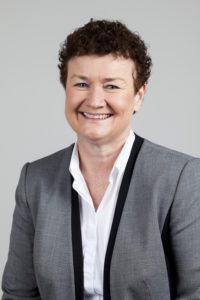OPINION: Finding new ways to settle refugees
The world is embroiled in the worst refugee crisis in history with 65 million people displaced from their homes.
Among them are three million seeking asylum, 21 million declared refugees, 40 million internally displaced and 10 people million who are stateless.

AMES Australia CEO Cath Scarth
There are 24 people being displaced from their homes each minute. The UN has submitted 120,000 refugees for resettlement in 2016 and plans to submit 143,000 next year and 170,000 in 2018 – but this falls far short of the number of those in need.
Hope is emerging in the form of a ‘global compact’ of nations that it is hoped will see agreement over the equitable sharing of the responsibility for the protection of refugees.
But, it is likely that even with a compact among nations agreed to there will still be a significant shortage of resettlement places.
Familiar legal channels for migrants to move to new countries fall within three broad areas: labour, education, and family reunion.
In theory refugees are already eligible to move through many of these channels, but in reality pathways are often blocked by practical, technical, and political obstacles.
In many countries, including in Australia, there is a preference for highly skilled migrants which can limit the migration opportunities to a small elite group.
If there is one thing my organisation, settlement agency AMES Australia, has learned over 50 years of operation, it is that almost all refugees who come to this country have skills and strengths that could be usefully put to work in our economy.
We know that refugees, and for that matter migrants also, are desperate to find work, desperate to contribute and desperate to build new lives for themselves.
We also know that refugees are resourceful, resilient and entrepreneurial.
A recent audit of AMES Australia refugee and asylum seeker clients in Melbourne found more than a hundred had started their own businesses in the past year.
Australia takes in 13,750 humanitarian refugees and around 190,000 migrants each year – most of the latter group on visas related to their skills or qualifications.
Why could we not include more refugees among this migrant cohort?
There’s a saying that goes ‘the best thing you could give someone is a chance’.
We’ve all seen the TV images of refugees in Syria and other places around the world – many of them children – living in misery, fear and desperate need.
We could find places for some of these people here in our wealthy, safe society without spending significantly more money, without creating new legal structures or bureaucracies and without creating a political battleground.
With the clever and nimble application of existing migration arrangements, we could successfully settle and integrate some more of these people in dire need of safety.
Of course, the opening of alternative channels for refugees to come to Australia comes with caveats; there is need to keep the guarantees and protections that come with refugee status.
Careful attention needs also to be paid to work conditions to prevent exploitation. Refugees themselves would need to be convinced of the viability of these new pathways because of their own considerable investment in time and money.
And Australia needs to continue to shoulder its responsibility to take in refugees through the United Nations’ humanitarian programs.
So, how would all this work in practice? I hear you asking.
Research by the Migration Policy Institute’s Europe branch has come up with some recommendations intended for a global audience but which could easily complement the robust refugee settlement protocols we already have here in Australia.
The MPI think tank says governments could improve mechanisms to recognise refugees’ skills and qualifications.
Refugees often face higher barriers to proving their suitability for employment and study than other migrants and investing in improving the speed, scope and flexibility or qualification recognition would benefit both them and the economy.
The MPI says government could increase the supply of work and study opportunities for refugees and provide the chance – as the Victorian Government has done recently by opening up Vocational Education Training (VET) places to refugees – for refugees to fill gaps in their own skill profiles that may prevent them from getting jobs.
The researchers also say programs to offer extra settlement channels to refugees must occur at a meaningful scale and not just as pilots. They recommend partnerships between government and the private and not-for-profit sectors along with thorough cost-benefit analyses.
These things will require political will. We are seeing many countries of immigration raising requirements and tightening entry requirements.
But as public attention continues to be fixed on those TV images of desperate refugees and the global displacement crisis grows more chaotic, now might be a good time to rethink our immigration process.
Australia will be represented at summit on October 19 hosted by US President Barack Obama seeking increased and sustained global support for UN humanitarian appeals; greater opportunities for resettlement; and expanded opportunities for refugee self-reliance through access to education, legal employment.
The summit will run alongside a meeting of the General Assembly of the United Nations which will discuss similar themes.
So here is an imminent opportunity to start a conversation about developing programs and initiatives that give more refugees access to legal pathways to settlement here in Australia.
Fixing the global refugee crisis and giving sanctuary to the millions of displaced will be more of a marathon than a sprint. But now might be a good time to fire the starting gun.
Cath Scarth is CEO of AMES Australia, one of the nation’s leading migrant, refugee and asylum seeker settlement agencies.












